| Trieste tramway network | |||||||||||||||||||
|---|---|---|---|---|---|---|---|---|---|---|---|---|---|---|---|---|---|---|---|
 Trieste, Giuseppe Verdi Square in early 1900 | |||||||||||||||||||
| Operation | |||||||||||||||||||
| Locale | Trieste, Friuli-Venezia Giulia, Italy | ||||||||||||||||||
| |||||||||||||||||||
| |||||||||||||||||||
Trieste's urban tramway system was operational from 1876 until 1970.
| Trieste tramway network | |||||||||||||||||||
|---|---|---|---|---|---|---|---|---|---|---|---|---|---|---|---|---|---|---|---|
 Trieste, Giuseppe Verdi Square in early 1900 | |||||||||||||||||||
| Operation | |||||||||||||||||||
| Locale | Trieste, Friuli-Venezia Giulia, Italy | ||||||||||||||||||
| |||||||||||||||||||
| |||||||||||||||||||
Trieste's urban tramway system was operational from 1876 until 1970.

After the creation of the first horse-bus routes in 1860, mostly by the firm "Cimadori", the first horse-drawn tram followed in 1876, organized by “Società Triestina Tranway (STT)”, a Belgian-owned society, also known as “Triester Tramway Gesellschaft” or “Societé de Tramways de Trieste”. [1] The first route, the “via Torrente-corsia Stadion-Boschetto” route, was inaugurated on March 30, 1876. [2] In the later 1800s, the horse-drawn tram network was significantly increased. In 1900, its maximum expansion, the following routes were in service: [1]
The STT, in competition with other proposers, won a public tender to realize a network of electric trams in Trieste based on “Sprague system”, collecting electricity from overhead wires. The gauge of the track was of 1445 mm (4 ft, 8 7⁄8 in); the electricity supply was 600 V direct-current. Consequently, on October 3, 1900, the first route between Barcola (a seaside resort near the famous Miramar Castle of Maximilian of Austria) and Boschetto (a densely populated district of Trieste) was inaugurated: curiously, almost of the same itinerary of the first horse-drawn tramway. [1]
Fourteen years after, at the onset of the First World War, the STT managed the following routes:
Electric lines:
Horse-drawn line:
The routes were marked only by colored schedules with name of destination, with no number or letter; different colors identified the different routes. This was done to allow the illiterate to be able to read the map. Every car carried a “train number”, that distinguished any vehicle on the same route (this system – by little dox-matrix indicators – is still valid today, on the buses of “Trieste Trasporti”).

Verify the success obtained by electric trams, the Municipality of Trieste decided to realise and to manage directly further routes, but the licensee STT taken a legal action in order to stand up for oneself. The Supreme Court of Vienna (until 1918, Trieste was part of the Austrian-Hungarian Empire), however, issued on May 19, 1910 a sentence in favour of Municipality. Therefore, on June 7, 1913 got under way the new route Piazza Goldoni-San Sabba, identified by the number “1” and managed directly by Municipality.: [1]
Finished the World War I as a consequence of Rapallo Treaty (November 1920), Trieste became an Italian town. The new Administration of the Municipality, in order to raise the decent profit resulting from public transportation, decided to take it upon itself the whole net of STT, starting from 1921. Any route was enumerated. [1]
The last route, the "11", opened on December 23, 1928, and ran from the center of the town to “Rion del Re”, a new neighborhood built in the hills in the south-east of Trieste. At the same date, the network reached to the maximum extension, with 124 trams and 86 trailers in service and with 11 routes covered about 45 km (28 miles): [1]
In 1934 the Municipality decided to unify the public utilities and create the A.C.E.G.A.T., acronym that means “Council Society for Electricity, Gas, Water and Tramway”. [1] At the same time, 48 modern trams (401-448 batches) with high capacity entered in service, in place of the 1900 little trams (101-160 batch) that were retired.

The decline of the trams quietly began in 1935, with the conversion of the route “10” into a bus line, and later into a trolleybus line. Before World War II, the transportation network of A.C.E.G.A.T. consisted of nine tram routes and three trolleybus routes, plus occasional services carried out by buses.
The war, even with its air raids, hardly damaged plants and most of the rolling stock of the A.C.E.G.A.T. remained intact. In June 1945, Trieste was occupied by allied troops that remained there for nine years and created the Free Territory of Trieste. During the refurbishment of the tramway system, many services were conducted by equipped Allied Army lorries (trucks).
The tram, though having reached a good level of quality, was less economic than the trolleybus or motor bus and showed high-grade of performance only on level lines, with flowing itineraries and a high number of passengers; that being so, A.C.E.G.A.T. decided to modified the “mix” between trams and trolleybus, increasing decisively the latter. Around 1952, routes "1", "5", and "11" were converted into trolleybus routes; route "4" was terminated; and routes "6" and "7" were merged. Two night services were created ("31" and "32"). [1]
After the “Trolleybus Conversion”, the tram system consisted of the following routes:
Nearly all of the two-axle trams and countless trailers were scrapped. In the summer time, as Trieste is a seaside resort, the route “6” (piazza Goldoni - Barcola) was created and the routes “3” and “8” took a detour to the beach resorts.
In Italy, in the early 1960s, the economic situation of the public transportation authorities began to fail. Municipalities were coerced to fill the balances of the transportation companies that grew poorer year after year. In order to significantly reduce the costs, it was considered fit to replace the conductors with automatic ticket machines: for many factors, A.C.E.G.A.T. considered these machines unfitting with tram and trolleybus operations. Therefore, the Municipality decided to convert the entire network to bus operations within 1970. In the evening of March 31, 1970, the last urban tram ran in Trieste on route “9”. [3]
The last trolleybus ran in 1975. On July 1, 1977 A.C.E.G.A.T. merged into “Azienda Consorziale Trasporti” and ceased to exist. Today in Trieste, the “Trenovia di Opicina”, a peculiar 1902 extra-urban tram (see map), is the only remaining relic of Trieste's tram network.

| Fleet no. | Axles | Year | Builder | Notes |
|---|---|---|---|---|
| 1÷29 | 2 | 1900 | open trailers, many former horse-drawn, scrapped in 1930s-1940s | |
| 31÷43 | 2 | 1900 | closed trailers, many former horse-drawn, scrapped in 1930s-1940s | |
| 45÷52 | 2 | 1912 | Grazer Waggonfabrik | original equipment of “Servizio Comunale” as 501-508, scrapped in the later 1960s |
| 53÷62 | 2 | 1927 | Officine di Savigliano | scrapped in the later 1960s |
| 63÷70 | 2 | 1927 | Officine Casaralta | scrapped in the later 1960s |
| 71÷89 | 2 | 1900 | closed trailers, many former horse-drawn, scrapped in 1930s-1940s |
| Fleet no. | Axles | Year | Builder | Elec. equipment | Notes |
|---|---|---|---|---|---|
| 101÷160 | 2 | 1900 | Union El. Ges. Wien | AEG Berlin | original equipment of STT, scrapped in the 1930s-1940s |
| 161÷166 | 2 | 1925 | Officine Bagnara | CGE | scrapped in the later 1950s |
| 167÷178 | 2 | 1912 | Grazer Waggonfabrik | Union El. Ges. Wien | original equipment of “Servizio Comunale” as 1-12, scrapped in the later 1950s |
| 179÷200 | 2 | 1927 | Officine di Savigliano | CGE | scrapped in the later 1950s, 191 and 194 left as tool cars (194 preserved at Railways Museum of Trieste Campo Marzio) |
| 201÷224 | 2 | 1927 | Officine Casaralta | CGE | scrapped in the later 1950s |
| 401÷408 | 4 | 1933 | Stanga | TIBB | scrapped in the early 1970s |
| 409÷428 | 4 | 1934 | Stanga | TIBB | scrapped in the early 1970s, 427 preserved at Railways Museum of Trieste Campo Marzio |
| 429÷448 | 4 | 1938 | Stanga | TIBB | scrapped in the early 1970s, 442 preserved at Railways Museum of Trieste Campo Marzio and 6 units (443-448) transferred over to STEFER-Rome in the early 1960s (446 is now preserved in Trieste and 447 in Turin) |

Trieste is a city and seaport in northeastern Italy. It is the capital and largest city of the autonomous region of Friuli-Venezia Giulia, as well as of the regional decentralization entity of Trieste.

The Trieste–Opicina tramway is an unusual hybrid tramway and funicular railway in the city of Trieste, Italy. It links Piazza Oberdan, on the northern edge of the city centre, with the village of Villa Opicina in the hills above.
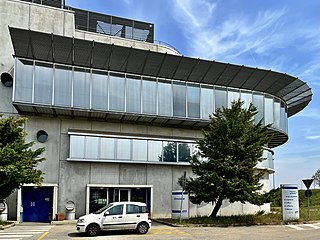
The Gruppo Torinese Trasporti (GTT) is a public benefit corporation responsible for public transportation in the provinces of Alessandria, Cuneo, Asti and the Metropolitan City of Turin. It was created in 2003 from the merge of ATM and SATTI, the latter responsible for railway connection in the province of Turin as well as for the Turin metro. GTT is now wholly owned by the Turin City Hall.
Azienda Trasporti Milanesi S.p.A. is the municipal public transport company of Milan and 46 surrounding metropolitan municipalities. It operates 5 metro lines, 17 tram lines, 124 bus lines and 4 trolleybus lines, carrying about 776 million passengers in 2018.

Lugano railway station is the main railway station of the city of Lugano, in the Swiss canton of Ticino. The station is on the Gotthard railway and is also the terminus of the Lugano Città–Stazione funicular. The metre gauge Lugano–Ponte Tresa Railway (FLP) has a separate station at Lugano FLP railway station across the station forecourt from the main line station.

Nova Gorica railway station serves the town and municipality of Nova Gorica, in the Slovenian Littoral region of Slovenia, and is also accessible from the town of Gorizia, Italy.

Trieste Centrale railway station (Italian: Stazione ferroviaria di Trieste Centrale; German: Triest Südbahnhof is the main station serving the city and municipality of Trieste, in the autonomous region of Friuli-Venezia Giulia, northeastern Italy.

The Naples tramway network is located within the city and comune of Naples, in the region of Campania, southern Italy. In operation since 1875, the network has waxed and waned in size and vitality over the years, and is now growing once again. It is now 11.8 km (7.3 mi) long, and comprises three routes, known as lines 1, 2 and 4.
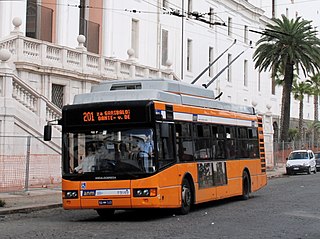
Trolleybuses in Naples provide a portion of the public transport service in the city and comune of Naples, in the region of Campania, southern Italy. From 1964 to 2015, two independent trolleybus systems were in operation, both publicly owned, but only that of Azienda Napoletana Mobilità (ANM) remains in operation. The ANM system opened in 1940, whereas the smaller trolleybus network of Compagnia Trasporti Pubblici di Napoli (CTP) opened in 1964.

The Sanremo trolleybus system or San Remo trolleybus system, also known as the Italian Riviera trolleybus, is focused on the town and comune of Sanremo, in the region of Liguria, northwestern Italy.
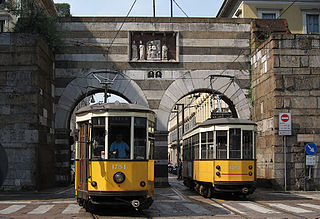
The Milan tramway network is part of the public transport network of Milan, Italy, operated by Azienda Trasporti Milanesi (ATM).
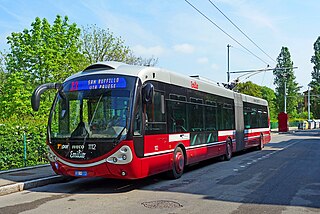
The Bologna trolleybus system is part of the public transport network of the city and comune of Bologna, in the region of Emilia-Romagna, northern Italy. While being in operation since 1991, the current system comprises five urban routes: 13, 14, 15, 32 and 33. Additional routes are presently under construction.

The Rimini trolleybus system forms part of the public transport network of the Province of Rimini, in the region of Emilia-Romagna, Italy.

Trasporti Pubblici Luganesi (TPL) is a public transport operator in and around the Swiss city of Lugano. Previously known as the Società luganese dei tramway elettrici, Tranvie elettriche comunali, Azienda comunale del traffico (ACT) and Azienda comunale dei trasporti della Città di Lugano (ACTL), the organisation was founded in 1884 and adopted its current name in 2000.

The Lugano tramway network was part of the public transport network of Lugano, in the canton of Ticino, Switzerland, for over half a century. Opened in 1896, the network was progressively replaced by the Lugano trolleybus system by 1959, with one independent line surviving until 1964.
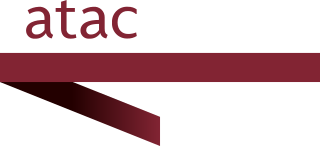
ATAC S.p.A. is an Italian publicly owned company running most of the local public transportation services, paid parking and incentive parking lots in Rome. More specifically, the company handles, on behalf of Roma Capitale Authority, the entire tramway, trolleybus network and metro lines, as well as most of the bus lines in the city. It also operates, on behalf of the Administrative Region of Lazio, three railways: Roma-Civita Castellana-Viterbo, Roma-Giardinetti and Roma-Lido. ATAC S.p.A., with its 2,200-kilometer-wide public transport network, its over 8,500 busses and 70,000 parking stalls, is currently one of the biggest public transportation companies in Europe and the largest in Italy.

Trieste's trolleybus system was operational from 1935 until 1975.

The Bologna tramway network was an important part of the public transport network of Bologna, Italy. It was established in 1880 and discontinued in 1963.
Trasporto Passeggeri Emilia-Romagna is a public company overseeing public transportation in the Metropolitan City of Bologna, in the province of Ferrara and in parts of the provinces of Modena and Ravenna, Italy.

Azienda Trasporti Livornese, known as ATL, was a public company that managed the local public transport in Livorno and its province including Elba.